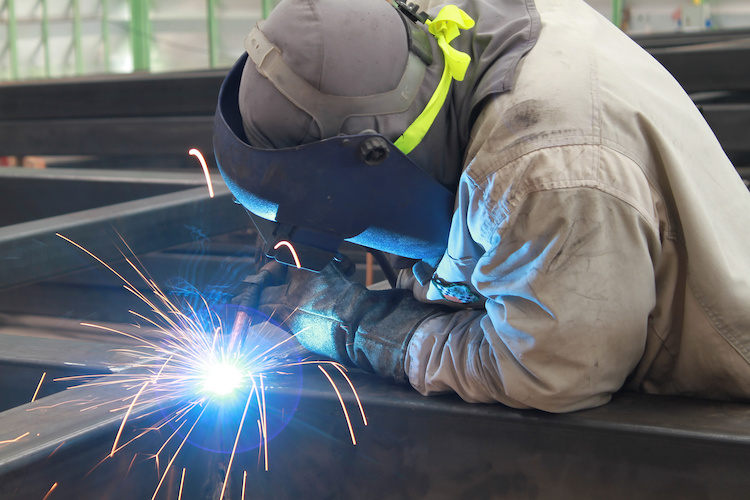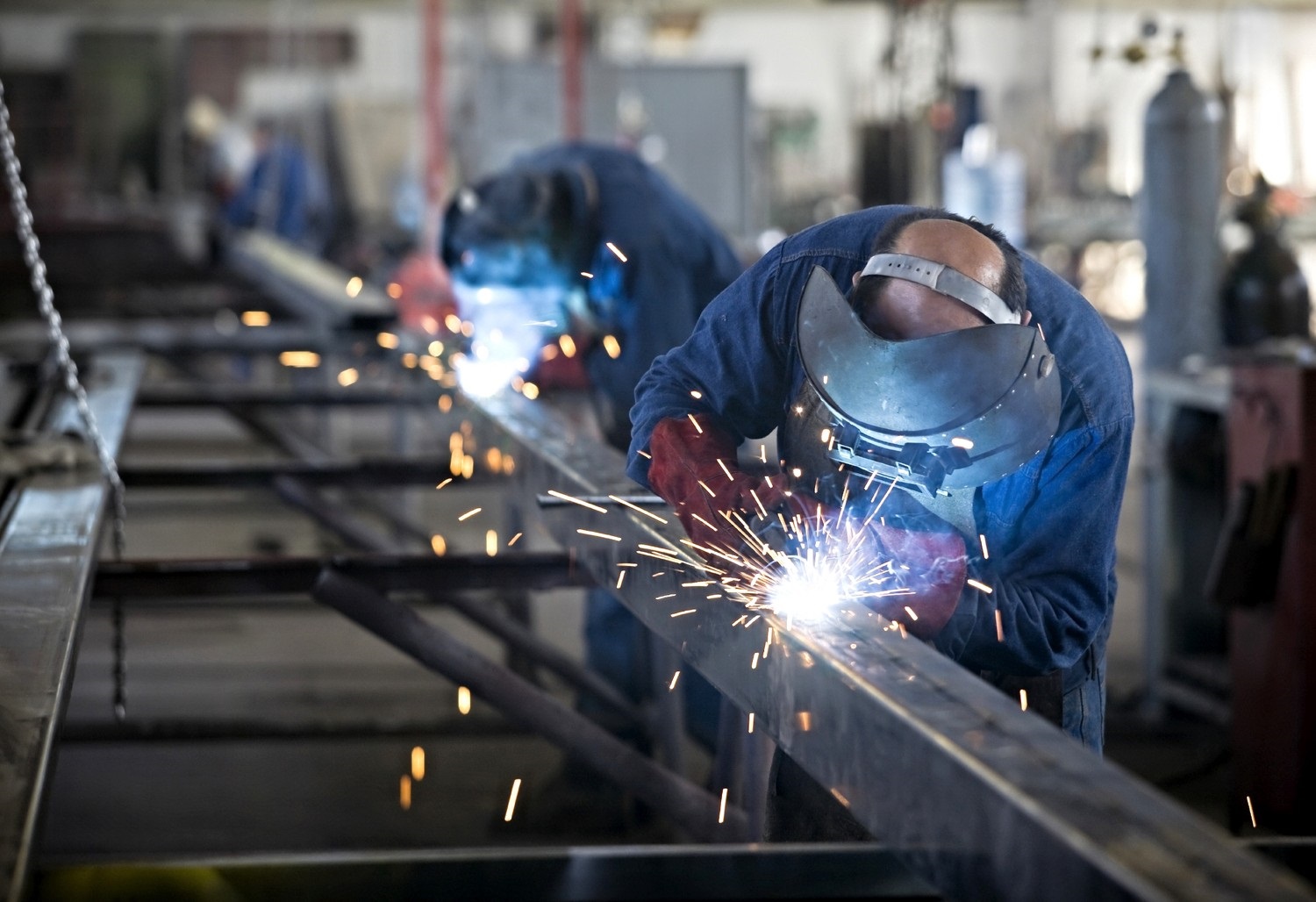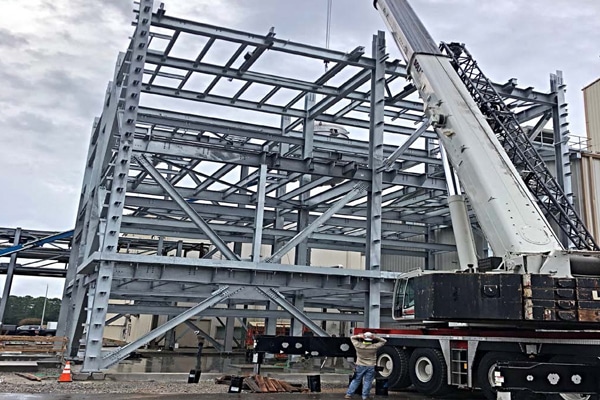Metal Fabrication Melbourne: Precision Design for All Requirements
Metal Fabrication Melbourne: Precision Design for All Requirements
Blog Article
Innovative Trends in Steel Manufacture: Enhancing Sturdiness and Accuracy
In the world of steel manufacture, the pursuit of durability and accuracy has actually resulted in a wave of cutting-edge trends that are reshaping the market. From developments in welding innovations to the assimilation of robotic automation in construction processes, the landscape of steel production is progressing quickly. High-strength alloy development, coupled with the use of 3D modeling and simulation software application, is pressing the borders of what is attainable in terms of structural integrity and precision. The growing focus on lasting techniques in steel production is not only driving efficiency however likewise cultivating an extra ecologically conscious technique to manufacture. These patterns are not simply forming today yet additionally laying the groundwork for the future of steel manufacture, assuring more improvements in durability and accuracy.
Advanced Welding Technologies
In the realm of steel fabrication, the fostering of cutting-edge welding innovations has actually significantly changed the sector's strategy to accomplishing superior top quality and accuracy in structural welds. Advanced welding modern technologies, such as laser light beam welding and friction mix welding, have become game-changers in the field. Laser light beam welding utilizes a focused laser beam to join metal components with amazing accuracy and rate, making it suitable for thin products and elaborate layouts. On the other hand, rubbing mix welding develops incredibly solid bonds by mechanically intermixing the particles of the materials at the joint, getting rid of the need for melting the metal. These technologies supply various advantages, consisting of reduced heat-affected areas, marginal distortion, and improved mechanical properties in the bonded joints. By leveraging these sophisticated welding strategies, steel producers can boost the resilience, strength, and precision of their architectural welds, fulfilling the significantly requiring needs of modern construction tasks.
Robotic Automation in Construction
Embracing robot automation has actually ended up being a cornerstone of contemporary steel manufacture practices, simplifying procedures and boosting performance across the market. Robotics are revolutionizing the way steel parts are manufactured, using unequaled accuracy and rate while decreasing human mistake. These automated systems can handle repeated jobs with constant accuracy, bring about better final result.
One key advantage of robot automation in steel construction is the ability to function around the clock without tiredness, dramatically boosting manufacturing result. This constant operation lessens downtime and speeds up job timelines, ultimately saving costs for producers. Furthermore, robotics can be programmed to execute complex jobs that may be hazardous or tough for human workers, boosting safety and security in the workplace.
Furthermore, robot automation enables seamless assimilation with various other electronic modern technologies, such as computer-aided design (CAD) software program and Web of Points (IoT) systems (steel fabricators melbourne). This interconnected approach enhances communication between various stages of fabrication, enhancing workflows and making certain real-time tracking and control. As the steel manufacture industry proceeds to develop, robot automation stands apart as a transformative force driving efficiency and precision in producing processes

High-Strength Alloy Development
The advancement of high-strength alloy advancement in steel construction is reshaping the market's strategy to boosting product toughness and efficiency. High-strength alloys are engineered to show premium mechanical buildings, such as increased tensile stamina, sturdiness, and corrosion resistance compared to traditional steel qualities. By including these innovative alloys into construction procedures, producers can create parts that stand up to greater tension levels and severe settings, resulting in more dependable and durable final result.
One secret benefit of high-strength alloy development is the ability to reduce product density without jeopardizing structural integrity. This not just results in lighter-weight parts yet also adds to cost savings and boosted efficiency in fabrication and setting up procedures. The improved strength-to-weight ratio of these alloys allows for the layout and construction of structures with greater load-bearing capabilities while lessening general weight.
3D Modeling and Simulation Software Application
Improvements in steel manufacture procedures have actually been considerably pushed by the integration of sophisticated 3D modeling and simulation software application devices. These tools enable producers to produce comprehensive online models of their projects, enabling them to envision the end product with precision prior to any manual labor starts. By imitating various anxiety steel fixing variables, environmental problems, and architectural tons, fabricators can maximize styles for boosted longevity and efficiency. Furthermore, 3D modeling and simulation software application improve the production procedure by recognizing possible concerns early, lowering the need for expensive rework and lessening product waste.

Lasting Practices in Steel Manufacturing
Incorporating lasting practices right into steel manufacturing procedures is important for reducing ecological impact and guaranteeing long-term source accessibility. One key sustainable technique is the adoption of energy-efficient innovations to minimize greenhouse gas exhausts during the steel production procedure. This includes using renewable resource sources, such as solar or wind power, to power steel plants and executing energy-efficient equipment to enhance energy use.
One more critical facet of sustainable steel manufacturing is the responsible sourcing of resources. This entails making sure that the iron ore and other resources made use of in steelmaking are obtained from honest and environmentally pleasant resources. By promoting openness in the supply chain and adhering to rigorous environmental criteria, steel manufacturers can decrease the unfavorable influences of resource extraction on local ecological communities and neighborhoods.

Final Thought
In final thought, the cutting-edge patterns in steel manufacture such as advanced welding modern technologies, robot automation, high-strength alloy advancement, 3D modeling and simulation software application, and sustainable techniques are boosting the toughness and precision of steel products. These improvements are reinventing the steel fabrication sector by boosting top quality, sustainability, and effectiveness. It is clear that the future of steel construction hinges on welcoming these innovative modern technologies to meet the needs of contemporary building and construction and manufacturing sectors.
In the realm of steel construction, the search of sturdiness and accuracy has led to a wave of ingenious trends that are improving the market.In the world of steel manufacture, the adoption of innovative welding modern technologies has dramatically reinvented the market's approach to achieving remarkable top quality and precision in architectural welds. As the steel manufacture sector continues to evolve, robot automation stands out as a transformative pressure driving efficiency and precision in manufacturing procedures.
In addition, reusing and reusing steel scrap and waste products play a substantial role in enhancing the sustainability of steel manufacturing. steel fixing.In verdict, the innovative trends in steel fabrication such as advanced welding modern technologies, robot automation, high-strength alloy development, 3D modeling and simulation software, and lasting methods are enhancing the sturdiness and precision of steel items
Report this page